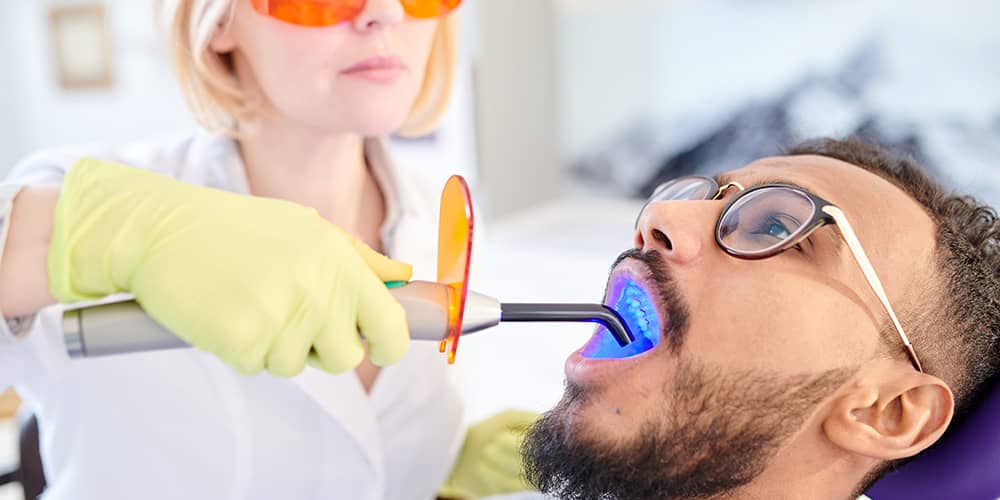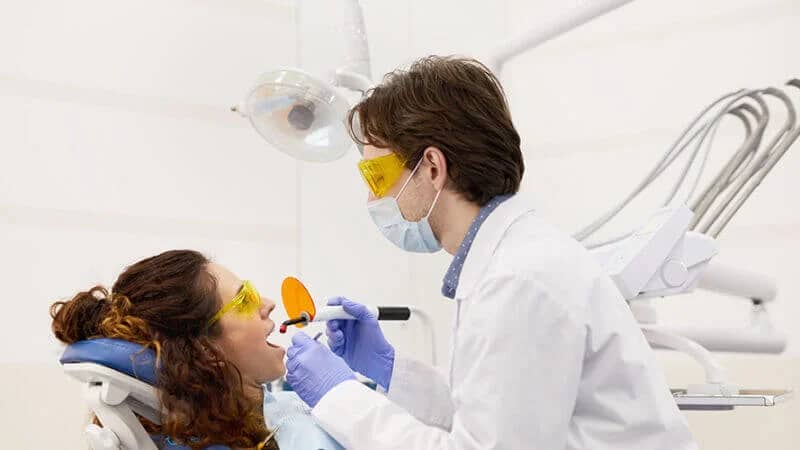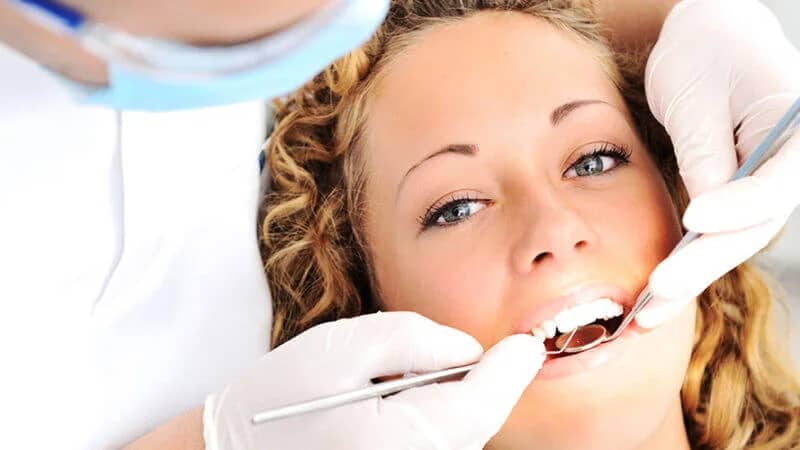Emerging technology results in advanced dental NYC teeth whitening. In general, there are many teeth whitening procedures available in cosmetic dentistry. Let’s know more about professional teeth whitening procedures with different technologies and their advancements.
Teeth Whitening Advanced Dental NYC
The popularity of teeth whitening treatments encouraged the creation of both over-the-counter items and professional teeth whitening technologies. Dental staining and discoloration can occur in a variety of ways. The type of discoloration created will have a great impact on how it is treated.
Numerous teeth-whitening techniques exist, but not all of them are suitable for everyone. Your teeth would need to be examined by your dentist first. Additionally, finding the best teeth whitening dentist in New york is essential for your teeth whitening procedure.
Various Reason For Patients Getting Tooth Discoloration And Its Types
The enamel on your teeth is the hardest outer layer of the teeth. Additionally, it is prone to stains. Beverages and specific meals will easily stain your enamel. As the enamel is porous, things that cause discoloration can seep into those pores. This sort of discoloration, known as extrinsic discoloration, appears externally on the surface of the tooth.
Intrinsic discoloration refers to stains in the dentin, the inner layer of the teeth beneath the enamel layer. There are many causes of intrinsic stains, including tooth wear due to aging. Over time, the enamel may deteriorate, become thinner, and become exposed, revealing the dentin beneath. Additionally, dental trauma, excessive fluoride exposure, heredity, and the use of specific drugs can all contribute to this discoloration.
Intrinsic stains are more serious and difficult to remove. On the one hand, extrinsic teeth stains can be easily removed with cosmetic procedures because they appear on the enamel of the tooth. These stains may be removed with good dental hygiene, although not always. Modern dentists have a variety of teeth whitening technology at their disposal to whiten teeth for more difficult stains and enhance a person’s smile.
Advanced Dental Dentists Use Various Technologies For Teeth Whitening
The best candidates for teeth whitening have healthy gums and teeth. When a patient has gum disease, a dentist will not recommend for teeth-whitening procedure.
The processes are secure, quick, and productive when carried out under the guidance of a qualified specialist. However, there are a number of factors to take into account, such as spending budget, lifestyle preferences, or deciding between in-office and at-home therapy.
Here are some of the technological methods dentists employ to whiten teeth:
Laser Teeth Whitening or Power Bleaching
Laser tooth whitening also referred to as power bleaching, combines gel and laser light. Each tooth is covered in a bleaching gel that often contains a small amount of hydrogen peroxide or carbamide peroxide.
Dentists will take extra precautions to prevent the adverse effects of these substances because their concentrations are strong enough. Gum irritation and sensitive tooth are some of these adverse effects that can be caused. So, the dentist isolates your teeth using a rubber or tissue dam to protect your gums and oral tissues.
Your teeth will be exposed to laser light after the bleaching gel has been administered for roughly an hour or two, or until the shade you desire has been achieved. The peroxide in the bleaching gel is activated by the light, which whitens the teeth. Sometimes UV light, Halogen, and LED lights are also used to activate the bleaching gel.
The bleaching agent vaporizes the stain molecules in the teeth when it is activated by a laser, UV light, or other means, leaving the perfect white teeth as desired. You can pick from a variety of exclusive power bleaching or laser teeth whitening treatments. Following an oral examination, your dentist will advise on the best option.
However, there is a risk of overheating with laser light, which might harm the nerves. So, it is carefully handled by a well-experienced professional to whiten your teeth.
Zoom Teeth Whitening treatment performed by a dentist in the dental office
This zoom teeth whitening procedure is also referred to as In-Office whitening treatment. It is also a superior choice because the light utilized can illuminate every tooth simultaneously. Infrared radiation is also filtered out by the light employed, which reduces the amount of heat that is applied to the teeth compared to laser whitening. Comparatively speaking, Zoom is a quicker whitening method.
At-home teeth-whitening treatment with dental care guidance
This treatment can be performed in your comfort at home with the guidance of a dentist. Your dentist creates a customized whitening tray that perfectly fits your teeth by taking impressions of your teeth.
The amount of time the whitening gel is in contact with your teeth is increased with a customized tray. Minimizing contact between your gums and the whitening gel is another benefit of customization. The whitening gel’s peroxide will vary, but it’s normally from 10% to 38%.
You need to wear the whitening tray every day with bleaching gel in it. The time frame can change; some trays are worn for anywhere between 30 minutes and several hours. It will take at least two weeks to see the desired results.
Over-The-Counter Gels And Whitening Strips
Bleaching gels are administered directly to the surface of the teeth gently twice a day with a tiny brush.
This will probably take two weeks to complete. Contrarily, whitening strips are placed over the teeth twice daily for about 30 minutes and are coated with bleaching gel, typically one that contains peroxide.
The use of the strips continues for two weeks. But this method cannot guarantee desired results or adverse effects of the treatment.
Teeth Whitening Toothpaste And Mouth Rinses
Toothpaste comprises special chemicals or abrasives which can remove surface stains. This toothpaste is not recommended for daily use even though it won’t cause excessive wear to the teeth. But the teeth whitening results are minimal compared to professional teeth whitening methods.
Antibacterial mouth rinses remove bacterial accumulation and surface stains. This can be used after professional teeth whitening treatment to maintain the whitened teeth for long years.
Conclusion
Cosmetic dentistry has evolved many teeth whitening methods with different technologies. It is recommended to get frequent teeth whitening procedures. However, not everyone should whiten their teeth. Check with your dentist, your dentist will advise you on the best option that better suits your oral health and whiten your teeth.



